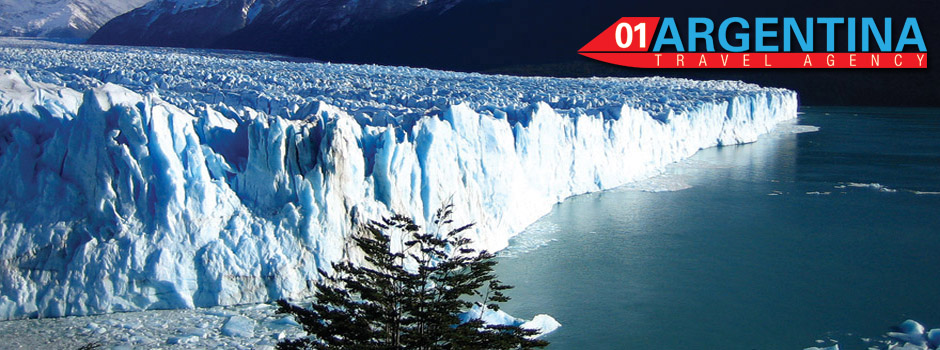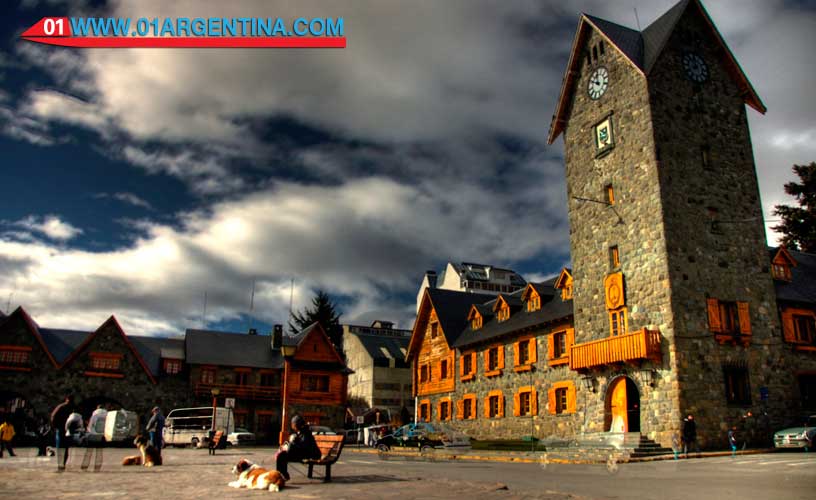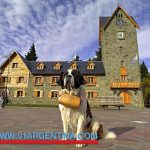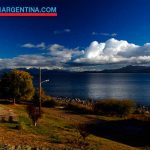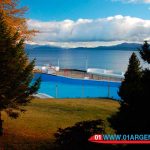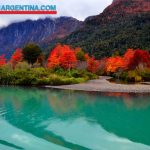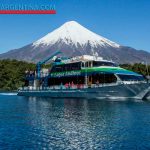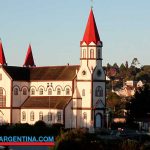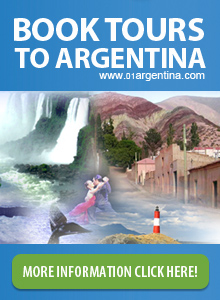Civic Center
Who has not taken a photo in the Civic Center with the huge lake Nahuel Huapi as a background? With the dogs San Bernardo? Or amidst laughter and funny poses next to your study group?
It was shocking to reach the Civic Center of Bariloche by the steep staircase that connects with the waterfront of Lake Nahuel Huapi. Not for repeated that first moment ceases to be unique and it seemed to us as magnificent as the first time that we approached him.
We had time to go through it and understand what the magnetism attracted to all visitors. The Civic Center has turned 70 years of life and continues to have a unique appeal both in winter and summer.
The imposing green stone buildings and the large wooden doors that surround a relatively small square correspond to the facilities of the municipality, the Provincial Police, Customs, the Sarmiento Library and the administration of National Parks.
In the center of the square of old pebble stones, we find a pedestal with the statue of General Julio Roca mounted on his horse. His attitude is tired, like advancing in the middle of the Desert Campaign. They were hard times in which the natives were displaced to give way to the white colonization of the territory.
Along with him, several generations of San Bernardo dogs have become the center of attention of tourists. Their sad faces have walked at their whimsy here and there, sleeping their nap or stretching their tens of kilos of weight on a bench in the square.
Roca symbolizes the intimate history of this piece of Patagonian land and the San Bernardo, known for helping lost people, are part of mountain life. They live in total harmony and nobody imagines the one without the other in that traditional Bariloche walk.
Of the public buildings the municipality stands out due to its size and beauty. Its main wing finishes in a tower from where an old clock accompanies with its bells the passage of time. A recova protects of the winds and the prevailing cold in the zone.
There is a mysterious presence in small windows below the clock. Four wooden figures appear and greet the hours. What were they? What did they symbolize? A detail of this square that we should see in the museum.
In the Museum of Patagonia Dr. Francisco P. Moreno, many of our doubts were dissipated. It occupies a large space in the building of the administration of National Parks and in its plants of crusty wooden floors houses valuable collections of elements and history of Patagonia.
A narrow street allows the traffic of cars that, in zig zag, ascend from the lake, surround the square and go to the center on Miter Street. There two arcades give an essentially European characteristic to that corner of the building complex.
The starting point for this beautiful walk began in 1934, when the president of the national park Nahuel Huapi, Dr. Exequiel Bustillo, made important works for the area and the architect Ernesto De Estrada carried out the advanced architectural project.
The surroundings, with a beautiful green park, complement the whole. To our knowledge, the only thing that overshadows the imposing Civic Center is the Bariloche Center, a cement mole that does not match the manor of the first.
We returned another night at night and despite the prevailing cold many walked and fired their cameras in front of the illuminated stone buildings. We found that we were not the only ones who were fascinated by the place.
The rhythms of the city have changed since the Civic Center was inaugurated. What continues is the mystery that it exerts on all of us to not stop stepping its place every time we visit the city of Bariloche.
